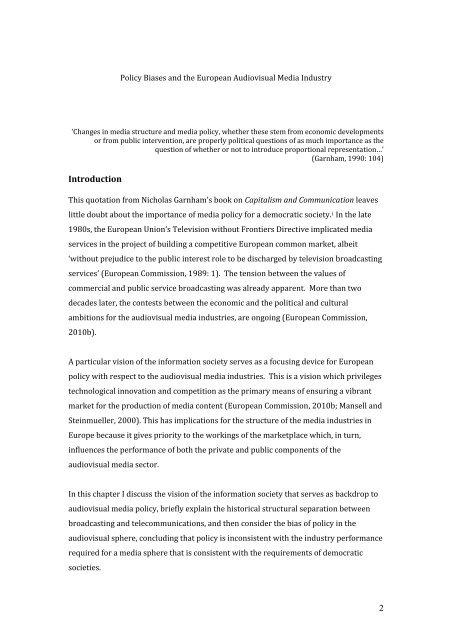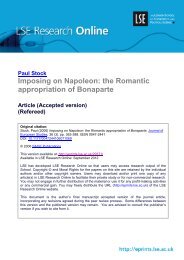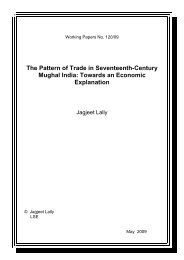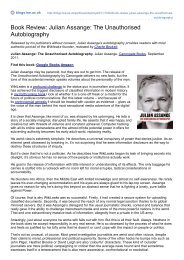Download (307Kb) - LSE Research Online
Download (307Kb) - LSE Research Online
Download (307Kb) - LSE Research Online
Create successful ePaper yourself
Turn your PDF publications into a flip-book with our unique Google optimized e-Paper software.
Policy Biases and the Europea n Audiovisual Media Industry<br />
‘Changes in media structure and media policy, whether these stem from economic developments<br />
or from public intervention, are properly political questions of as much importance as the<br />
question of whether or not to introduce proporti onal representation…’<br />
(Garnham, 1990: 104)<br />
Introduction<br />
This quotation from Nicholas Garnham’s book on Capitalism and Communication leaves<br />
little doubt about the importance of media policy for a democratic society. i In the late<br />
1980s, the European Union’s Television without Frontiers Directive implicated media<br />
services in the project of building a competitive European common market, albeit<br />
‘without prejudice to the public interest role to be discharged by television broadcasting<br />
services’ (European Commission, 1989: 1). The tension between the values of<br />
commercial and public service broadcasting was already apparent. More than two<br />
decades later, the contests between the economic and the political and cultural<br />
ambitions for the audiovisual media industries, are ongoing (European Commission,<br />
2010b).<br />
A particular vision of the information society serves as a focusing device for European<br />
policy with respect to the audiovisual media industries. This is a vision which privileges<br />
technological innovation and competition as the primary means of ensuring a vibrant<br />
market for the production of media content (European Commission, 2010b; Mansell and<br />
Steinmueller, 2000). This has implications for the structure of the media industries in<br />
Europe because it gives priority to the workings of the marketplace which, in turn,<br />
influences the performance of both the private and public components of the<br />
audiovisual<br />
media sector.<br />
In this chapter I discuss the vision of the information society that serves as backdrop to<br />
audiovisual media policy, briefly explain the historical structural separation between<br />
broadcasting and telecommunications, and then consider the bias of policy in the<br />
audiovisual sphere, concluding that policy is inconsistent with the industry performance<br />
required for a media sphere that is consistent with the requirements of democratic<br />
societies.<br />
2
















